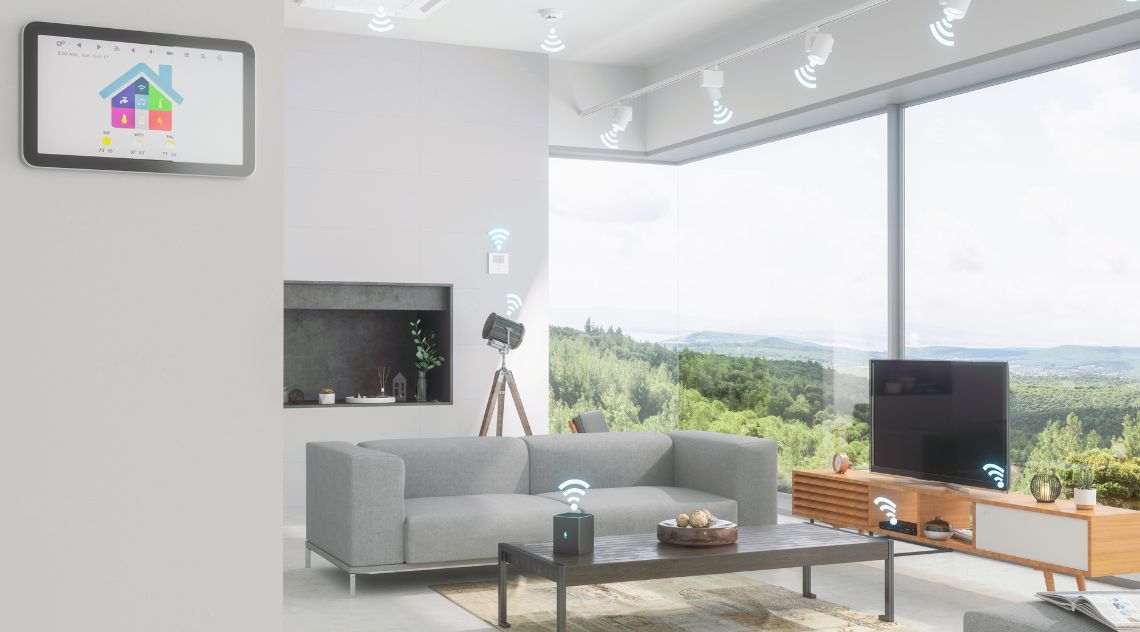Table of Contents

In our most recent exploration, BoltChatAI delved into the evolving landscape of smart home technology, uncovering the ins and outs of consumer adoption, experiences and attitudes toward the devices of tomorrow. With BoltChatAI at the helm, we wanted to shed light on the current trends driving smart home device usage, the hurdles and hesitations users face, particularly around data and security concerns, and the transformative impact these gadgets have on daily living and overall quality of life. Let’s jump right in!
Objective
Our main objective was to dive right in and see what we can uncover about smart home device adoption, understanding the intricate relationship consumers have with these technologies. We aimed to gauge consumer awareness, sentiments and behavioural patterns concerning smart home devices, such as their concerns about data privacy and security. We also wanted to explore, for the avid smart home technology users, how these devices are woven into the fabric of daily life, enhancing home security, comfort and the overall quality of life.
Methodology and Sample Definition
Using BoltChatAI, we engaged with a wide array of consumers across various demographics based in the United States. BoltchatAi’s automated targeting was able to pinpoint the precise smart home consumer groups needed to drive insightful discussions on the topic. Through our targeted, in-depth survey questions, BoltChatAI aimed to peel back the layers of consumer experiences, expectations and reservations possible users have about integrating smart home devices into their lives.
Improving Daily Living with Smart Home Technology
Kicking off our report, BoltChatAI reported that one of the big pull factors consumers highlighted was the convenience and security enhancements offered by devices such as smart speakers, doorbell cameras and automated home systems. The ability to control various aspects of the home environment, from lighting to temperature, with a simple voice command or a tap on a smartphone, not only simplifies their day-to-day routine, but also empowers individuals with disabilities or those leading hectic lifestyles. Moreover, the peace of mind provided by real-time security features, such as surveillance cameras and motion detectors, was highly valued. Being able to keep an eye on their property remotely made consumers feel much more secure.
“I do like my telecom provider, however I do wish my contract was shorter so I could update my contract. The early termination fees aren’t the best but that is due to my longer contract, so I do find them reasonable and fair.” – Female, age 19
“It’s very important. I use my phone a lot on the go and a lot for my work so I need to to be reliably connected at all times so that I am always contactable” – Female, age 39
Privacy and Data Security: A Balancing Act
Despite the enthusiasm for the functionality of smart home devices, privacy and data security concerns loom large. Scepticism about how personal data is collected, used and potentially shared taints consumer perceptions, with calls for greater transparency and user control over their data. While some users trust brand reputations and rely on existing regulations for protection, a significant number are calling our for enhanced privacy features and clearer, more user-friendly data policies.
As we look towards the future, the demand for smart home devices that offer more robust security features, better integration capabilities and enhanced user control over data privacy is evident. Consumers are not just looking for smart devices to have smart devices, consumers want new technology that will make their lives easier and more secure, they need a harmonious blend between convenience, security and privacy.
The Future of Smart Home Technology
The journey into the adoption of smart home technologies reveals a complex landscape of enthusiastic embracers standing side by side with privacy protectors. As the industry evolves, the pathway forward is clear: innovation must not only push the boundaries of what’s possible but also address the legitimate concerns of users. By listening to the voices of users, the industry can navigate the challenges of today and steer towards a future where smart homes are not just intelligent but also trusted extensions of our living spaces.
Want to find out even more about consumer perceptions surrounding the adoption of smart home technology? Then you should take a look at the full report! it is available to download here. Deep dive into BoltChatAI’s findings and explore the diverse world of smart home technology. Want to learn how BoltChatAI can give you actionable insights like these for your consumers? Book a demo with our team on our homepage and find out how BoltChatAI can reveal fresh viewpoints and guide strategic market decisions.






